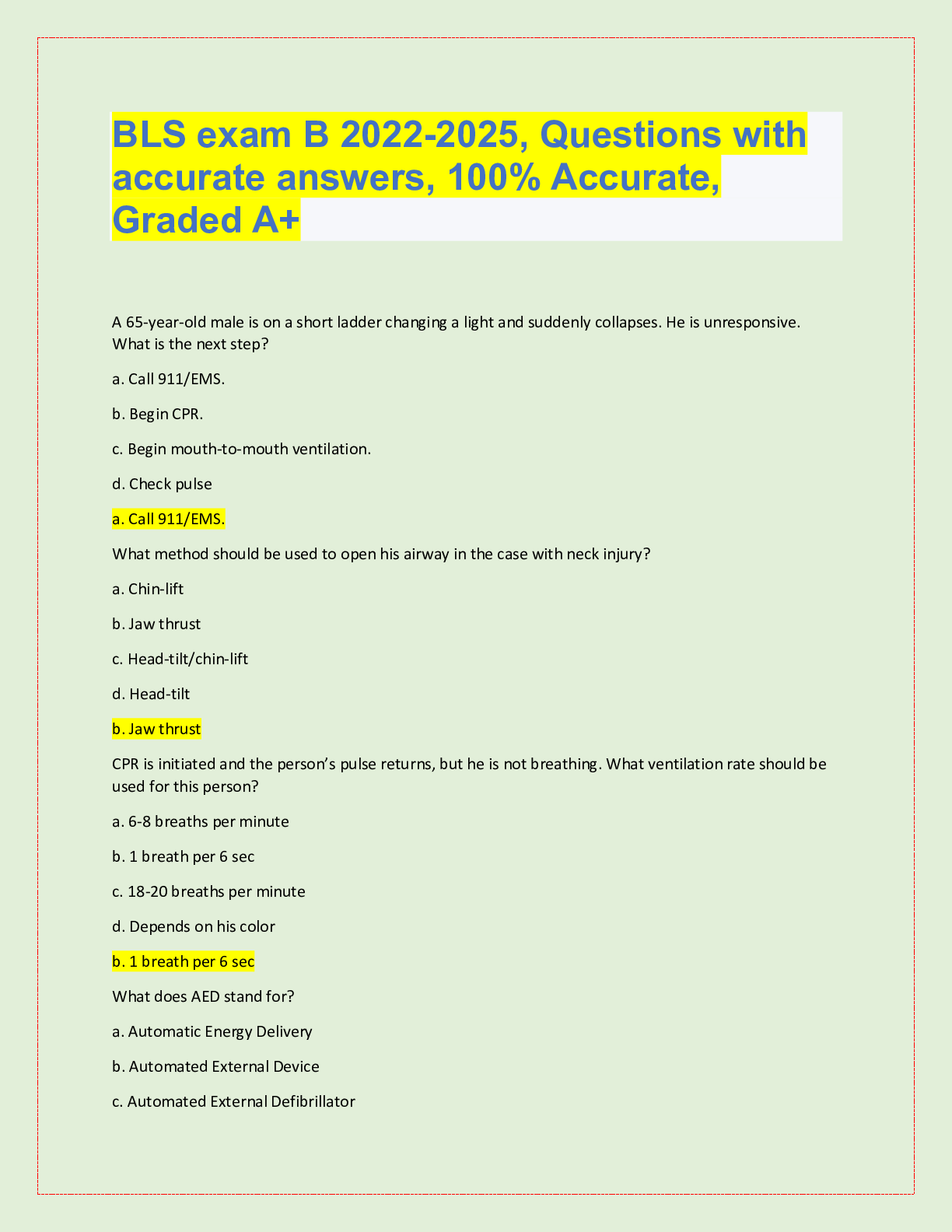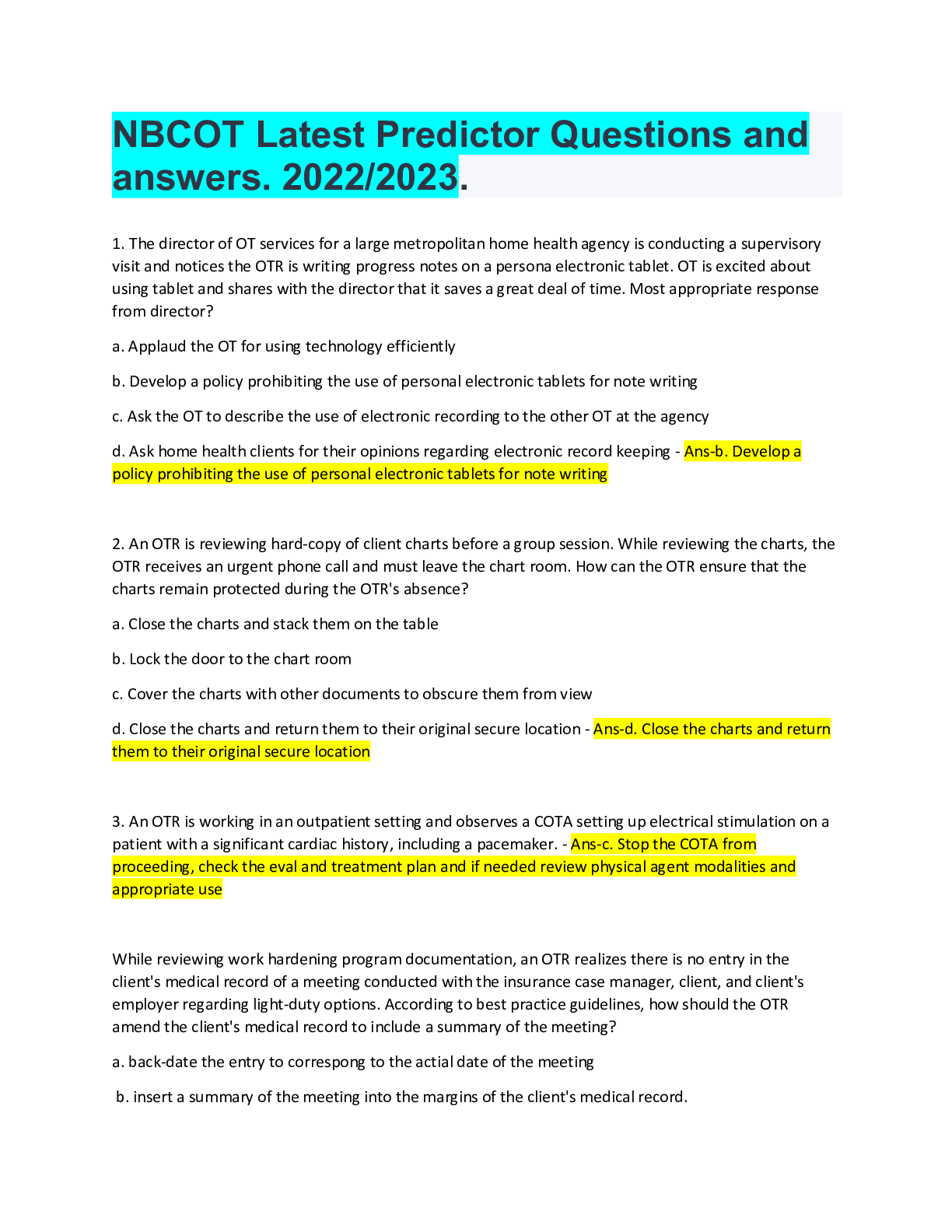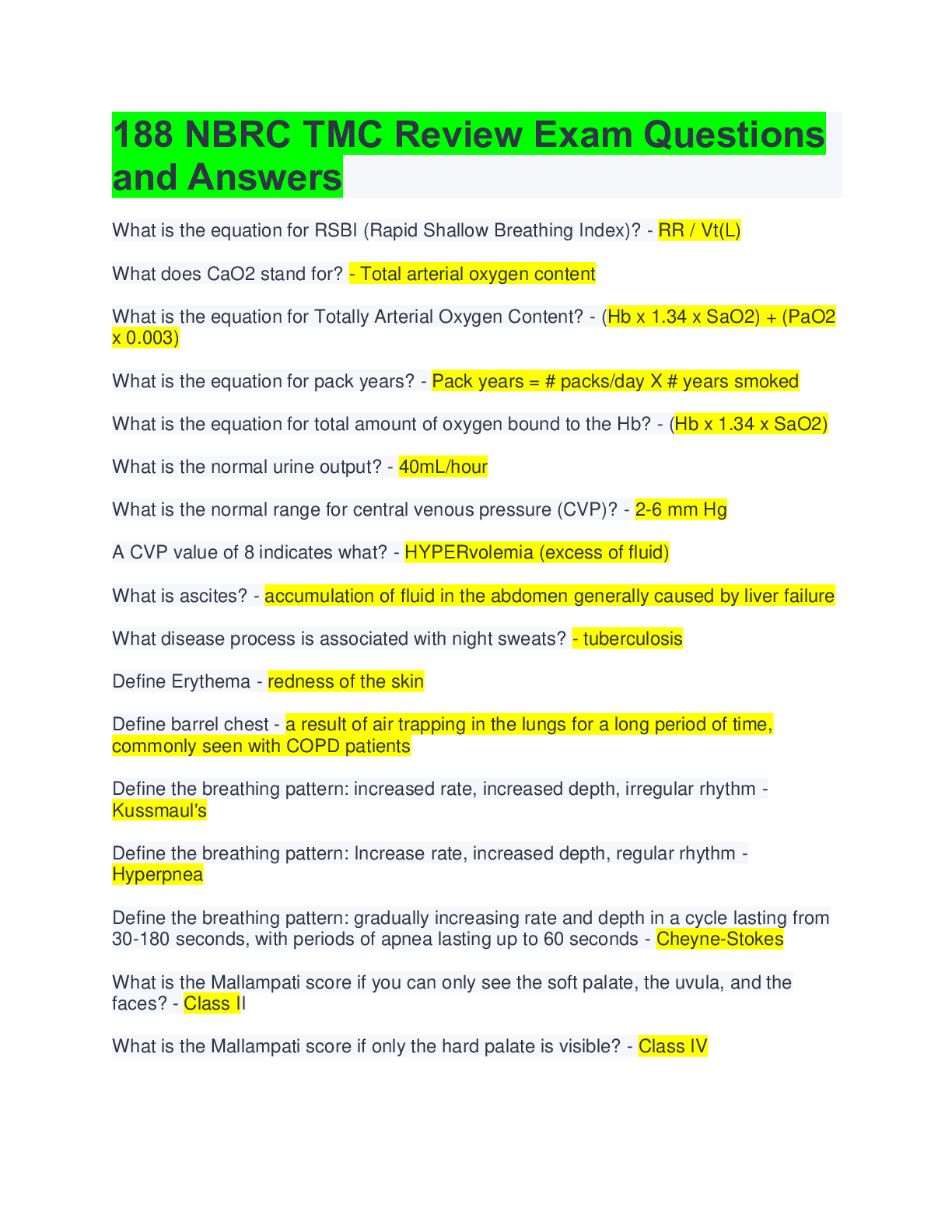*NURSING > QUESTIONS & ANSWERS > NUR 3405 Quiz 4, Questions and answers. 2022/2023. 100% verified. (All)
NUR 3405 Quiz 4, Questions and answers. 2022/2023. 100% verified.
Document Content and Description Below
NUR 3405 Quiz 4, Questions and answers. 2022/2023. 100% verified. What indexes do descriptive statistics contain? - ✔✔- variability of distribution - frequency distributions - central ten... dency - standard deviation A systematic arrangement of values from lowest to highest, together with a count or percentage of how many times each value occurred is: - ✔✔- frequency distribution Homogeneous data set - ✔✔- a narrow range or smaller variation Negative correlation coefficient - ✔✔- relationship where one variable increases while the other decreases - between .00-1.00 - the higher the absolute value of a coefficient, the stronger the relationship (-.80 is stronger than +.20) The use of inferential statistics permits a researcher to: - ✔✔- draw conclusions about a population based on information gathered from a sample Statistical hypothesis testing - ✔✔- use of objective criteria for deciding whether research hypotheses should be accepted as true or rejected as false Type I Error - ✔✔- rejecting a true null hypothesis, false positive Type II Error - ✔✔- failing to reject a false null hypothesis, false negative How do researchers control the risk of making a type I error? - ✔✔- by selecting a level of significance which is the probability that such an error will occur significance level (alpha) - ✔✔- what we compare our p-value to, 0.05 is commonly used P < 0.05 - ✔✔reject the null hypothesis Chi-square test - ✔✔- used to test hypotheses about the proportion of cases in different categories T-Test - ✔✔- test the difference between the means of two groups What important aspects of validity should an instrument or scale examine? - ✔✔- criterion related validity - content validity - construct validity Common threats to internal validity - ✔✔- selection - mortality - maturation - history External validity is important to EBP because it allows researchers to - ✔✔- generalize evidence from controlled settings to real-world practice settings What does internal validity measure? - ✔✔- the research results for accuracy What are common threats to external validity? - ✔✔- experimenter - reactivity - novelty (knowledge of what is being done effects outcome) What aspects of reliability are important to quantitative researchers? - ✔✔- internal consistency - equivalence - stability What is the stability of an instrument? - ✔✔- the degree to which similar results are obtained on separate occasions Reliability coefficient - ✔✔- an index of reliability - .00 to 1.00 - the higher the value, the more reliable is the instrument How is internal consistency evaluated? - ✔✔- by calculating the coefficient alpha (Cronbach's alpha) Interrater reliability - ✔✔- the degree to which two or more observers or coders agree about the scoring in an instrument Nominal measurement - ✔✔- lowest level - involves using numbers simply to categorize attributes Ordinal measurement - ✔✔- ranks people on attribute Interval measurement - ✔✔- ranks people on an attribute and specifies the distance between them Ratio measurement - ✔✔- highest level - ratio scales have a meaningful zero and provide information about the absolute magnitude of the attribute Descriptive statistics - ✔✔- used to describe and synthesize data - parameters: descriptor for a population - statistics: descriptive index from a sample Inferential statistics - ✔✔- used to make inferences about the population based on sample data - based on laws of probability - uses the concept of theoretical distributions Frequency distributions - ✔✔- systematic arrangement of numeric values on a variable from lowest to highest and a count of the number of times each value was obtained - described in terms of shape, central tendency, variability - presented with Ns and percentages or graphically Skewed distribution - ✔✔- an asymmetrical but generally bell-shaped distribution (of opinions); its mode, or most frequent response, lies off to one side Positive skewed distribution - ✔✔Most of the scores are bunched towards the left. The mode is to the left of the mean because the mean is affected by the extreme scores tailing off to the right. Negative skewed distribution - ✔✔Most of the scores are bunched towards the right. The mode is to the right of the mean because the mean is affected by the extreme scores tailing off to the left. Modality - ✔✔- number of peaks in a distribution - uni, bi or multi (2+) Central tendency - ✔✔- index of the "typicalness" of a set of scores that comes from the center of the distribution - mode, median, mean Which measure is the most widely used indicator of central tendency? - ✔✔- mean [Show More]
Last updated: 2 years ago
Preview 1 out of 11 pages

Buy this document to get the full access instantly
Instant Download Access after purchase
Buy NowInstant download
We Accept:

Reviews( 0 )
$8.00
Can't find what you want? Try our AI powered Search
Document information
Connected school, study & course
About the document
Uploaded On
Oct 10, 2022
Number of pages
11
Written in
Additional information
This document has been written for:
Uploaded
Oct 10, 2022
Downloads
0
Views
136


























